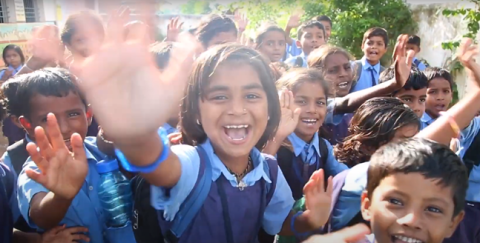The United Nations Convention on the Rights of the Child (UNCRC) serves as a guiding light, representing the shared global resolve to protect the well-being and rights of the youngest members of our world. UNCRC is more than a document – it is a promise to build a world where children thrive and have access to better opportunities.
In celebration of this enduring commitment to children’s rights, UNCRC Week has emerged as a pivotal annual event that brings together nations, organisations, and individuals across the globe to honour and uphold the principles outlined in the UNCRC. This special week commemorates this landmark convention’s adoption and reinforces the collective responsibility towards children.
In this article, we delve into the heart of UNCRC Week, exploring its significance and impact on children’s lives. We will discuss the theme for UNCRC Week in 2023, ‘Children have the right to relax, play, and take part in activities they enjoy,’ which highlights a fundamental aspect of children’s rights – to play and leisure.
The UNCRC: A Brief Overview
UNCRC is a pivotal international treaty adopted by the United Nations General Assembly in 1989. It is a comprehensive and legally binding framework that sets out the rights and protections afforded to children worldwide. UNCRC defines a ‘child’ as any person under the age of 18 years and acknowledges that every child, regardless of nationality, ethnicity, or background, is entitled to fundamental human rights.
At the core of UNCRC lie several key principles and objectives. These principles encompass the rights to survival, development, protection, and participation. UNCRC underscores the importance of treating children as active participants in decisions that affect them, respecting their evolving capacities, and ensuring that their best interests are a primary consideration in all actions concerning them.
The primary rights covered under UNCRC include:
-
Non-Discrimination
UNCRC asserts that all children, without discrimination, are entitled to the rights articulated in the convention. This means that every child, regardless of race, gender, religion, disability, or any other status, should enjoy the same rights and opportunities.
-
Best Interests of the Child
The child’s best interests must be a primary consideration in all actions concerning children. This principle underscores the importance of decision-making, prioritising a child’s well-being, safety, and development. It places the child’s welfare at the centre of policy, legal, and administrative decisions.
-
The Right to Life, Survival, and Development
This principle encompasses access to healthcare, nutrition, and a safe environment, ensuring that children survive, thrive, and reach their full potential.
-
Respect for the Views of the Child
This principle emphasises that children are active participants in society and should be included in decisions that impact their lives.
-
Right to Education
Every child has the right to education. This right should be directed toward developing the child’s personality, talents, and mental and physical abilities to their fullest potential.
-
Leisure, Play, and Cultural Activities
Children have the right to relax, play, and take part in a wide range of cultural, artistic, and recreational activities.
These principles and objectives collectively define the framework of UNCRC, ensuring that children’s rights are upheld and their welfare is protected across various aspects of their lives. They guide governments, organisations, and individuals in their efforts to promote and safeguard children’s rights.
Indian Government and NGOs’ Commitment to UNCRC
As a signatory to the UNCRC, the Government of India has made significant efforts to safeguard children’s rights. India has enacted several laws and policies to align with the UNCRC‘s principles and objectives:
- The Right of Children to Free and Compulsory Education Act, 2009, for example, guarantees the right to education for children aged 6-14 years, reflecting the UNCRC‘s emphasis on education as a fundamental right.
- Additionally, the Juvenile Justice (Care and Protection of Children) Act of 2015 reinforces the protection of children in conflict with the law and those in need of care and protection.
- The government has also established the National Commission for Protection of Child Rights (NCPCR) to monitor and advocate for children’s rights and well-being. These efforts showcase India’s commitment to fulfilling its obligations under the UNCRC.
NGOs like Bal Raksha Bharat (also known as Save the Children) play a vital role in supplementing the government’s efforts to safeguard children’s rights. As a child-focused NGO, Bal Raksha Bharat works on the ground to address the diverse needs of children in India. They often fill gaps in services and support for marginalised and vulnerable children. These organisations provide education, healthcare, and protection and conduct advocacy and awareness programmes to uphold children’s rights. Through their work, NGOs like Bal Raksha Bharat contribute to the broader goal of creating a protective and nurturing environment for India’s children, aligning with the Government of India and UNCRC‘s principles and objectives to ensure that children are given the best opportunities to thrive and develop.
Conclusion
As we conclude another UNCRC Week, we must recognise that safeguarding children’s rights is not a one-time effort but a continuous and evolving commitment. UNCRC Week serves as a poignant reminder of this commitment, inspiring nations, organisations, and individuals to renew their dedication to the cause of children’s rights.
By reflecting on the achievements, challenges, and ongoing work in this area, we can take a small step towards creating a world where children continue to be empowered and have opportunities to grow, learn, and play in a safe and nurturing environment.






